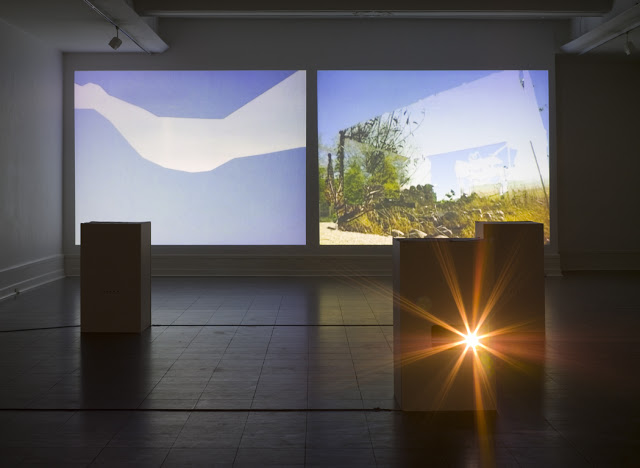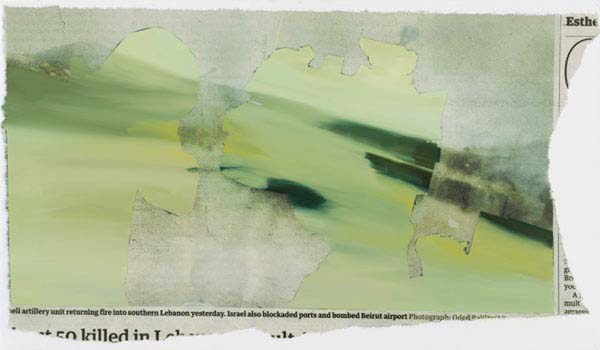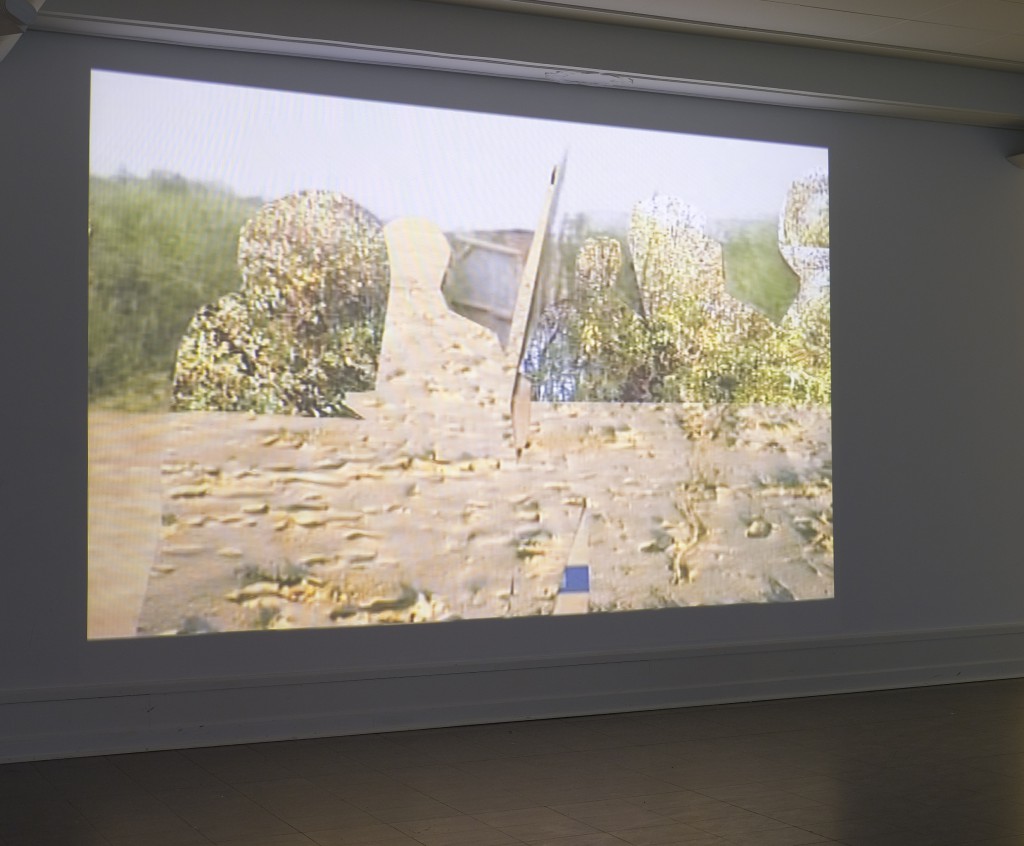
Bad Days
Catalogue for the exhibition: Bad Days
“There’s not a problem that I can’t fix, ‘cause I can do it in the mix.” – Indeep, “Last Night a DJ Saved My Life” (1982)
“Contemporary art thus presents itself as an alternative editing table that shakes up social forms, reorganizes them, and inserts them in original scenarios. The artist deprograms in order to reprogram, suggesting that there are other possible uses for the techniques and tools at our disposal.” – Nicolas Bourriaud, Postproduction (2002)
JACOB LILLEMOSE
Hard realities and software processes
An often used sayingin common language and professional discourse is that we live in a ‘media reality’. The exact meaning of the saying, however, seems a bit unclear, perhaps because this ‘reality’ is of an elusive and complex character? To come to a more precise understanding of the phrase is not only a question of words but fundamentally concerns our perception of and involvement in the world around us. First of all we might ask if there exists another reality besides or outside the media reality referred to. If so, what is the relation between these two – or more? – realities and can we inhabit both? Or are we referring to the idea that the media is our primary channel of access either through transparency or distortion to that other reality, a real – non-mediated – reality? Or do we mean that the media simply is our reality, that we live in a world where physical phenomena and events are completely transformed into the images and bits of a digital information flow? Finally, it seems reasonable to ask, how this media reality influences our sense of reality – socially, politically and culturally.
These general questions constitute an implicit frame of reference for Niels Bonde’s new series of videos from 2006 exhibited under the title “Bad Days”. As the title indicates, the videos explore the specific version of media reality that depicts the world through natural catastrophes, wars, extremist politics and other unfortunate events. The mainstream mass media tends to exploit the spectacular value of the ‘bad’ to generate the impression that the world is out of our control and reach and that the media is our only (and last) possibility to connect to and access this ‘bad’ world, basically to make us believe that the media reality is our reality. Opposed to this strategy, the videos offer us a subtle alternative to deal with the media reality of the ‘bad’ as well as with the ‘bad’ itself and not least to question our own concept of reality in relation to the media.
Documentation as an abstract model
An essential step in this tactic is to anticipate a heightened awareness of the media reality situation, its relation to the world and to the person ‘in front of the television’. Based on ready-made footage from news reports and self-made footage from a media event, Bonde thus presents us with three examples of media reality that challenge our understanding of what we see and not least how we see the world through media. The challenge is both formal and conceptual and incites us to comprehend ‘seeing’ in an expanded sense as a form of thinking with and about the world, rather than as a mere visual relationship. He addresses how news reports and media imagery in general, besides documenting specific events in the world, construct abstract models of mental involvement that ‘code’ how the ‘end user’ ‘processes’ the information about the world. In the mainstream mass media these models function as a means to manipulate and control the end user, to reduce him/her to a passive receiver, whereas Bonde in his videos works with art’s ability to speculate and imagine alternative models that empower the end user as a critically engaged media subject. Through the use of aesthetic means and effects he aims to turn our acceptance into ambivalence, consumption into reflection.

Media in the age of software
Another essential step is to anticipate a heightened awareness of the technological premises of current news media. Due to the general convergence of media most of today’s news is produced on computers and the imagery that is presented on our television (and to a greater and greater extent also computer) screens and in our papers is produced (recorded, edited and broadcasted) with various kinds of software. This practical introduction of software in the media represents fundamental and wide-ranging changes in our relation to media, changes that pose political problems as well as hold aesthetic possibilities.
Generally speaking, media imagery after software transforms the physical world to digital information that in principle can be presented – visualized – in any imaginable way. Digital information in itself is nothing but a series of numbers and in order for it to take the form of televised or screened images, digital information needs to be ‘interpreted’ by a piece of software. Although the software interprets the digital information automatically according to a pre-programmed algorithm, it is far from a neutral or an objective act (nothing technology ever does is). Rather, the interpretation is a radically coded act that involves manipulation and control on the one hand, while on the other hand it is open to all sorts of critical and playful experiments; and the media ambivalence that this double-sidedness signifies is an important point of departure for Bonde’s videos.

Remove and replace
Instead of returning to a pre-software media situation, Bonde works with the software. As mentioned above, the basis for the videos is footage appropriated from ABC and BBC and some footage he shot himself. The footage from the news channels shows an interview with Chechen insurgent leader Sjamil Basajev and a report from a massacre in a village in Kenya. In the footage shot by himself Bonde turns the lens on the flag of his home country, Denmark, as it flutters in the wind on the backdrop of a clear blue sky; and on Pia Kjærsgaard, leader of the nationalistic Danish People’s Party that since 2001 has been the supporting party of the government, as she holds a speech on Constitution Day in an idyllic setting by the sea (the two shots are projected adjoining one another and make up a single work). Using the common software After Effects, he has removed the central figures of the footage – Basajev, the bodies, the flag and Kjærsgaard – and substituted them with his own footage of different landscapes from the area around his house in southern Sweden. In most of the videos the ‘pasted’ footage kind of blends in with the rest of the image and functions almost like camouflage, but in the video with the Danish flag the effect is a graphic contrast. However, in both cases Bonde distorts footage of one (dramatic and people-related) recognizable world with footage of another (quite and ambient) recognizable world to create ambiguous imagery that is part documentary and part computer processed; part identifiable and part abstract; part news report and part aesthetic expression.
The ramifications of this rather simple gesture of removing and replacing are many. On a basic level it challenges our perception of the world through media in the age of software in terms of visual access and conceptual understanding. We are provoked into discarding the notion of the media as a transparent window onto the world and replacing it with the notion of a political matrix that changes the world as it records it. From there the gesture connects to questions of politics, technology, aesthetics and the way these questions are interconnected in media.

Software: Now you don’t see it, now you do
In this context Bonde’s use of technological software to manipulate the footage implicitly comments on the so-called ideological software that informs most of our media reality. Ideological software is the politics behind the television screen that determines what, when and how we see the world through the different media. Most often, we are not aware of the manipulative and controlling workings of this latter kind of software because they are not directly visible on the screen, in the imagery; rather ideological software uses the imagery as a screen to exercise its power in the hidden, behind the scenes. The workings of the technological software that Bonde uses are, however, visible in the imagery of the videos. The manipulation is done openly to make clear and express a critique of the role of ideology in the media and to make equally clear the difference that art can make. We are presented with the possibility that all imagery is run by a program, whether technological or ideological, and that every program is coded by a programmer with a political agenda; as well as with the possibility to de- and recode the imagery under non-ideological – aesthetic – conditions.
The way the videos make us aware of the manipulative tactics of the media allows for critical reflection as well as alternative ideas of media imagery. On the one hand, the videos have an alienating effect in the sense that they deny us essential visual information to make up the whole picture and invalidate our normal perceptual abilities, our automatic visual response. On the other hand, this ‘blindness’ slows down the information flow of the media and invites us to look behind or rather beyond the surface of the visible. In fact, the videos comment on another more common blindness in the media, namely the blindness created by the overflow of information. The high rate and extensive volume of imagery in the media might allow us to recognize what we see but leaves no time or space for us to realize what we see. If we relate to the information through mere recognition we reduce the events of the world to visual sensations, detach ourselves from the realities of the world and become easy prey for the manipulation tactics of ideology. To counteract this latter blindness Bonde uses computer manipulation to obstruct the superficial recognition and lay the foundations for a more profound realization. With a subversive gesture he uses one kind of manipulation against another kind of manipulation to question the content and authority of the imagery and asks the individual viewers to reflect on how it mediates our view of the world and our sense of reality. He addresses us in a way that anticipates our use of mental powers that are not limited by the visual information that the footage presents us with. We are invited to open our eyes on the world through the use of our mind. Thus, the focus of the videos is not just the concrete information about what is happening in the world but how we (represented by Bonde’s personal footage – his own reality – far from events) relate to, interpret and discuss, this information as a collective of individuals not defined by the media.

Evil vs. evil
Bonde’s choice of political subjects is highly significant in this regard. The news footage from ABC and BBC deals with terrorism and civil war respectively while his own footage from the Constitution Day celebration point to nationalistic tendencies in Danish politics and the Danish public; all subjects which indicate that we currently live in a world of animosities. Although there are fundamental differences between the use of weapons and words, between armies and politicians, the ‘use’ of an enemy in both cases is definitely comparable. The militia in Kenya, Basajev and Kjærsgaard all justify their fight through the articulation of a threat from some evil other party, the Russian government or non-Christian immigrants and refugees. The brutal irony is that their fight inflicts violence – physical or structural – on that other party and they become evil themselves.
Bonde’s videos suggest an alternative to the mainstream mass media’s usual sensationalistic and perfunctory stagings of this double evil and present us with more nuanced and open-ended ways to deal with it. By editing the evil figure out of the narrative and substituting it with footage containing no central figure, Bonde both literally and metaphorically allows the background to come into the foreground. From this ‘neutral’ ground – i.e. without the actual news – the narrative can be reappropriated and retold anew by us, rationally as well as emotionally, or rather encourage us to find a new balance between our rational and emotional involvement in the events we are confronted with.
In the case of the news footage from Kenya we may ask if we need to see the blood and corpses to relate to the conflict or if the imagery actually prevents us from relating to the conflict? Certainly, the extreme exposure to explicit violence both in the news and in the movies has numbed our visual sensitivity. Generally, we do not react with feelings of outrage but rather with indifference when we see people getting killed, suffering or being mistreated in the media. It is simply too much for us to deal with as real events and instead we (with the help of the media’s stagings) see it as a piece of fiction, a daily TV series. But the violence is real and it still takes place, maybe even to a greater extent than before; and we live in a globally interconnected world where it is irresponsible to pretend that is does not concern us. Perhaps, if the media left out the imagery of the violence we would be able to deal with the real again? This is the question that Bonde’s videos speculate about – in the form of a piece of fiction.

Bonde’s edited version of the ABC interview with Basajev raises the question of whether Basajev’s face and person really are essential to our understanding of the conflict between Russia and Chechnya; whether the conflict can be identified with him or if the focus on him diverts our attention from and reduces our understanding of the conflict. Of course, Basajev conceives and organizes the attacks against Russian interests and civilians but no conflict of that scale is ever just a question of one person, no matter how evil he or she is. Instead of just labelling him as the ‘bad guy’, ‘mad man’ or ‘master brain’ responsible for the conflict, the video allows us to view him as a symptom of a general system of violence and geo-political war in the former USSR. It removes the face of the conflict or rather presents the conflict as faceless and encourages us to ‘listen’ more carefully.
Facelessness and listening are also part of Bonde’s third video in the series. By removing party leader Pia Kjærsgaard, the video defaces her speech (even though most Danes immediately will recognize her voice) and allows us to listen to it word for word, to focus on the content and not on the person. The effect of this facelessness is, however, different than in the former video. Whereas Basajev poses in front of cameras dressed in his military uniform to show his preparedness to fight, Kjærsgaard plays the role of the ordinary woman that the common Dane can identify with to give her aggressive politics a human and sympathetic – a normal – face. The video denies her that role and face to expose the radicalism of her nationalistic and xenophobic (if not downright racist) agenda. An implicit reference in – and the visual backdrop of – Kjærsgaard’s speech is the Danish flag, Dannebrog, which Bonde has removed on an adjoining projection. Thereby, he denies Kjærsgaard’s politics a central symbol at the same time as he reappropriates the flag (as a reversal of Kjærsgaard’s appropriation of the flag) and presents it as an empty or open sign. With the imagery of the ‘faceless’ flag the video invites us – the public – to question what Dannebrog stands for vis-à-vis Kjærsgaard’s speech. Do her words represent the feelings we identify with the flag? Of course, on another level the video also removes the flag as an ‘evil’ symbol that leads to politics like Kjærsgaard’s and in that sense it is a true iconoclastic act.

Update your software
An obvious counter response to all of the above would be to ask if not Bonde’s videos express the naive, romantic or utopian idea that if we just pretend that the evil doesn’t exist it will in fact disappear, like the ostrich who believes that dangers will cease to exist if it puts its head in the bush or in the ground? Of course, the removal of the evil elements does point to a ‘disappearance’, but of a kind that has more to do with our relation to the events than with the events themselves. The videos do not attempt to erase the events and make us forget them like they never happened. Despite the removals the evil is still present in all the videos as a visible absence or as audio. Rather, the videos attempt to ‘erase’ our preconceived ideas about and accustomed reactions to the events when presented through the media in order to make us reprocess the information about the hard realities using different mental software.
Jacob Lillemose art historian and PHD candidate based in Copenhagen.

